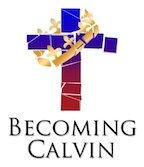 Deborah Kerr and Yul Brynner in "The King and I"
Deborah Kerr and Yul Brynner in "The King and I"
. . .as Anna's King of Siam would say. I find this all rather hard to understand: as someone trained in acting, having spent weeks in preparation for a particular role, I know that the truest route to authenticity is to be so thoroughly grounded in what you are doing you can live in the moment. But there is a belief circulating among some of my clients that knowing what you are going to say--beyond a vague idea and a couple of words jotted on a napkin--is a barrier to being your authentic self. "I didn't really prepare much, but I was fine," is the refrain I hear all too often.
But is "fine" good enough? The truth is we can't be better at anything without putting in the work. I know some folks are pressed for time. Others use this fear of inauthenticity as an excuse for laziness. But something else may be going on as well--a misunderstanding of both authenticity and preparation. I am told that being well-prepared can be bad when it causes you to come across as "scripted"--which I take to mean reading words off the page, without any real understanding, not to mention investment in, or enjoyment of, the message. This is not true preparation. False prep of this kind can become like armor you put on to protect yourself, or a barrier you hide behind. It definitely inhibits authentic connection. Good, thorough preparation actually frees you so you can fully communicate. It allows you to connect with your listeners using words, vocal tone, gestures, body language, and eye contact. When you prepare, you are liberated from fumbling around thinking "What do I say next?" and can be fully focused and fully present.
And what could be more authentic than that?



















